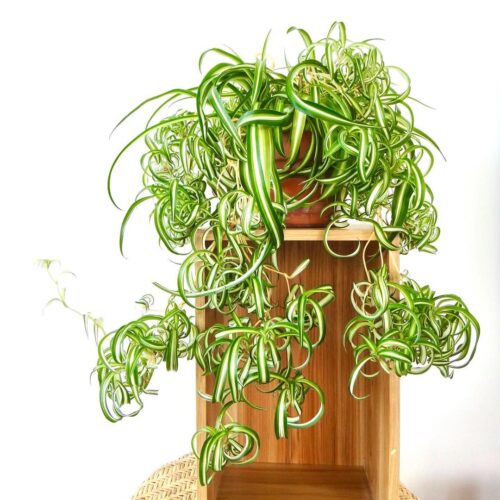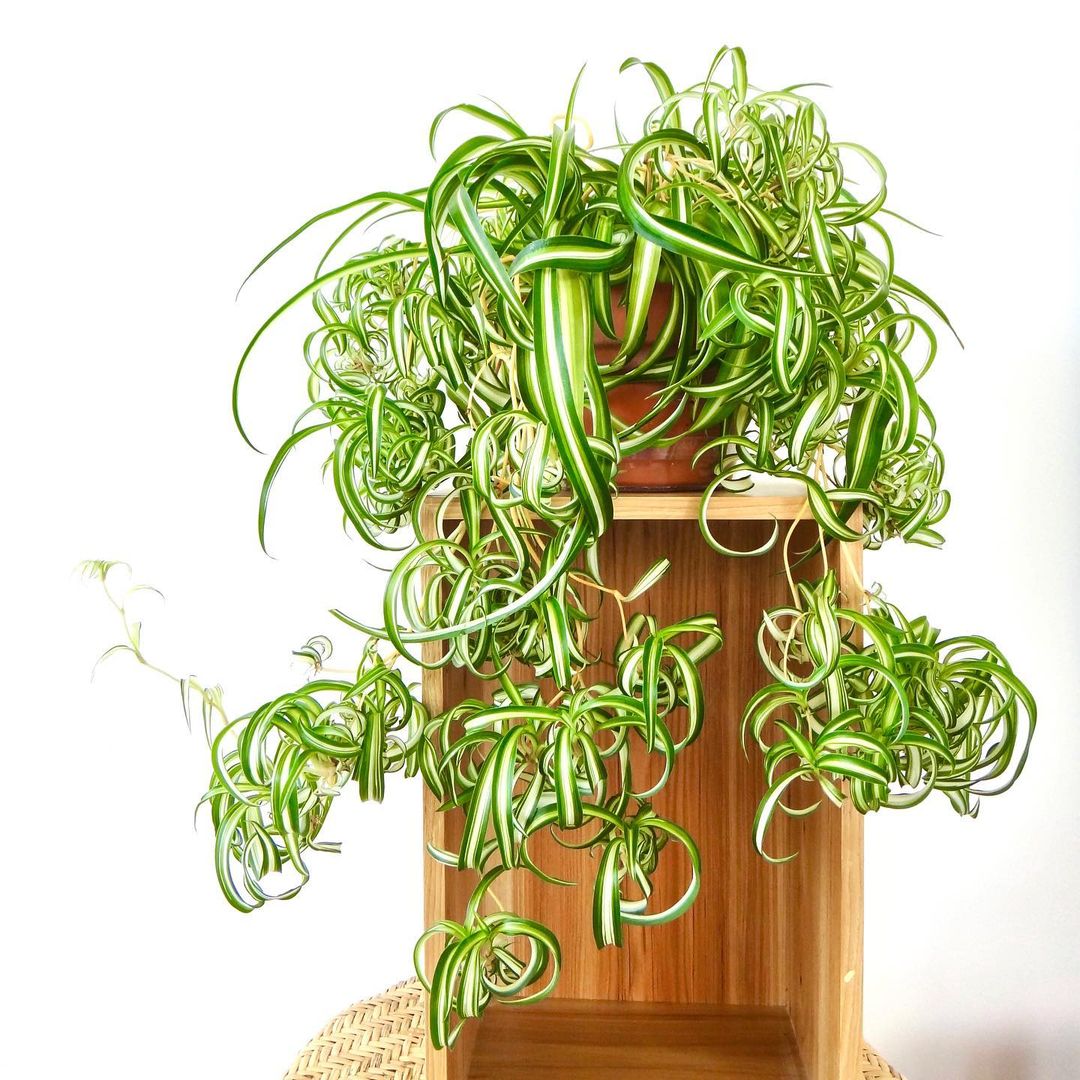The Curly Spider Plant is a beautiful, easy-to-grow houseplant with wavy foliage. It can also be grown outdoors in partial shade.
Curly Spider Plant is a low-maintenance tropical evergreen perennial that grows on neglect. It prefers bright indirect light to partial shade. Read more details about this plant in this post.
Botanical Name: Chlorophytum comosum ‘Bonnie’
Read: Growing Spider Plants Outdoors
Curly Spider Plant Information

The ‘Bonnie’ Spider Plant, also known as the Curly Spider Plant, comes from Africa and belongs to the Asparagaceae family. It has curly leaves with green and white patterns. This plant is easy to take care of and looks great indoors. It’s famous for purifying the air in your home.
Curly spider plants resemble spider plants in many ways, but their leaves have curled tips. They’re perfect for hanging baskets or decorative pots on tables.
The Bonnie curly spider plant grows up to eight inches tall. It doesn’t often flower indoors, but when grown outside, it can produce small, fragrant, star-shaped white flowers during spring and summer.
These flowers attract pollinators such as hummingbirds and bees.
Propagating Curly Spider Plants
Propagating Bonnie Spider Plants is the best way to ensure they are always in your home. The common method is division or using plantlets, which are straightforward but take longer to develop.
Mature plants naturally produce plantlets over time. If you’re using plantlets, wait until they have a few leaves and roots before separating them from the main plant.
Another effective method is division, which is faster. To divide the plant, remove it from its pot and separate it into three sections. Then, place each section into a separate container and continue caring for the parent plant.
Ideal Growing Conditions for Curly Spider Plant
Location
For indoor growth, place them near a bright window or patio door where they can receive indirect sunlight. While growing outdoors, curly spider plants do best in light shade. They can handle heavy shade, but their growth may not be as vigorous. Direct sunlight can damage the leaves.
Soil
Curly spider plants are adaptable to various soil types, but they prefer loose, loamy soil with good drainage. They prefer soil with a neutral pH but can tolerate slightly acidic to slightly alkaline conditions. Excessive salt levels in the soil can lead to browning of the leaf tips.
Watering
Spider plants prefer soil that is lightly moist but not waterlogged. Too much watering can lead to root rot and eventually kill the plant. They are also sensitive to fluoride and chlorine found in tap water, which may cause browning of the leaf tips. To prevent this, it’s advisable to use rainwater or distilled water for watering container plants.
Despite this sensitivity, spider plants can tolerate occasional fluctuations in watering, thanks to their fleshy tubers that retain moisture effectively.
Temperature and Humidity
Spider plants prefer warm and humid environments, with temperatures ideally staying above 50 degrees Fahrenheit. When growing indoors, it’s crucial to protect them from drafts and air-conditioning vents. Insufficient humidity can cause browning of the leaf tips, so it’s recommended to mist the plant regularly to ensure proper moisture levels.
Read: Growing Spider Plants in Hanging Baskets
Curly Spider Plant Care
Fertilizer
Feed the plant once a month in spring and summer. Excess fertilizer application can result in brown leaf tips whereas underfeeding can make the plant weak.
Apply all-purpose granular or water-soluble fertilizer in the growing season according to the instructions on the package.
Pruning
Whenever you spot dead or browning leaves on your curly spider plant, trim them promptly. If the plant starts to look too stretched out and thin, trim off the smaller offshoots to help the main plant grow better.
Repotting
When growing curly spider plants in pots, choose containers that are only about one-third bigger than the root ball. Use a pot with drainage holes. You’ll likely need to repot the spider plant every two to three years. You’ll notice it’s time when roots start to poke out of the drainage holes and above the soil.
Spring is the best time for repotting. Carefully take the plant out of its old pot and place it at the same depth in a slightly larger pot. Then, fill it around with fresh soil.
Pests and Diseases
Curly spider plants are usually healthy, but sometimes pests like aphids, whiteflies, and spider mites can attack them. If the leaves deteriorate, it is a sign of an infestation. A simple and natural method to address some infestations is to rinse the plant thoroughly with water. For more severe cases, insecticides or natural remedies like neem oil can be used.



